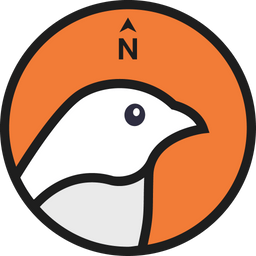The Seven Wells have a long storied history, recounting the time of the Moken, a group of sea nomads, who traveled to a small island in the southern part of the Andaman Sea in search of fresh drinking water. This journey led to the legend of the seven wells. However, according to the elders, there are three different legends regarding this tale, none of which can be definitively confirmed as the most accurate. As the sea nomads searched for drinking water, they discovered seven springs emerging from the ground. The first well, which was larger, was referred to as "the father," while the others were called "the mother" and "the child," diminishing in size respectively. It is believed to be a sacred site where one can express wishes as they desire. Celebrations sometimes involve singing and dancing, and white chickens are sacrificed as offerings. When the Moken needed fresh water, they dug a well of their own, which led to the creation of seven communal wells, with each person agreeing to dig their well close to the first. Another legend speaks of the Moken, who, after a long journey and stay on this island, decided to settle there and dig a water well. The first well they dug produced salty water, and so they dug deeper until they reached the seventh well, which yielded fresh water that they could use indefinitely. Before World War II, a local man named Mr. Abdul Rahman Pa Bari, who was involved in trade with Penang, brought various products such as flour, soap, and sugar to the area. He possessed knowledge of Islamic teachings and was a pioneer in establishing a mosque, educating the Moken who lived there, and maintaining peace in the community. Over time, he invited more relatives to settle in the area, which prompted the Moken to relocate as they preferred a less populated space. Later, during the reign of King Rama VII, Mr. Abdul Rahman was appointed as a village chief (equivalent to today’s Kamnan) and was granted the surname "Khunbara Burirak." He governed the area, referring to it by the Malay name "Talaga Tujuh," which translates to "Seven Wells." This name was later adapted to Thai as "Ban Bo Jet Luk," its current designation. Khunbara Burirak had four daughters and no male heirs, which caused his surname to fade over time. Today, only one daughter, Ms. Sai Nun, the youngest, still lives in Ban Bo Jet Luk. Ban Bo Jet Luk is located in the 1st village of Pak Nam sub-district, La-Ngu district, in Satun Province. It is a seaside village where fishing is the main livelihood, followed by trade. Situated approximately 18 kilometers from La-Ngu town, it is a rural community where the residents are known for their kindness, generosity, and camaraderie. Life here is simple, with everyone knowing each other and sharing what they have. The community is deeply religious, with teachings of the Quran being a part of daily life. There are learned scholars in the village who specialize in Islamic studies, contributing to discussions on religious matters, which influences the villagers’ way of life. Ban Bo Jet Luk has a population of 788 people, comprising 190 households, almost all adhering to Islam. Around 90% of the villagers engage primarily in fishing, using long-tail boats with gears like fish nets, shrimp nets, and traps to catch marine creatures from the shoreline up to five nautical miles off the coast. They catch a variety of fish, such as mackerel and squid, while shrimp tends to be predominantly white shrimp. Additionally, they operate fish traps and utilize traditional fishing practices that not only aim for harvest but also contribute to environmental conservation. The fishing tools used are specific for certain sizes and are fixed, allowing for sustainable catches, particularly during the monsoon season when shrimp are abundant. In the months of November and December, when fishing yields are low due to clear waters, the villagers grow watermelon, which has become a secondary occupation over a 90-day cycle. The community cultivates a variety known for high quality, such as "Ginree," "Jinthara," and "Damka," adjusting the crops according to customer preferences and grower expertise. The favored variety, Ginree, can produce fruits weighing 5 to 7 kilograms, often sold at 8-10 baht per kilogram, yielding significant income for the villagers. Aside from cultivating watermelons, residents also plant vegetables like cucumbers and pumpkins, rotating crops to maintain soil quality and ensure sustainable yields. Cattle raising has also become common, with approximately 80 households owning 4-5 cows each, and a group has been established to facilitate cattle farming, consisting of 40 members. During the off-season, villagers may also engage in collecting and selling shellfish and oysters to supplement their household income.
Photo Credit: Facebook Page : การท่องเที่ยวโดยชุมชนบ้านบ่อเจ็ดลูก - ปราสาทหินพันยอด
Ban Bo Jed Luk Tourism Community
Province: Satun
Reviews from Members
Be the first to review this place
Contact Information
Phone Number
081-542-0071
Website
https://www.facebook.com/bo7luk/
Hour of Operation
- Monday:08:00 - 18:00
- Tuesday:08:00 - 18:00
- Wednesday:08:00 - 18:00
- Thursday:08:00 - 18:00
- Friday:08:00 - 18:00
- Saturday:08:00 - 18:00
- Sunday:08:00 - 18:00

